Just after World War II, the U.S. sent thousands of troops to Antarctica for "training" and "reconnaissance" — but speculation about the mission's true purpose has swirled ever since.
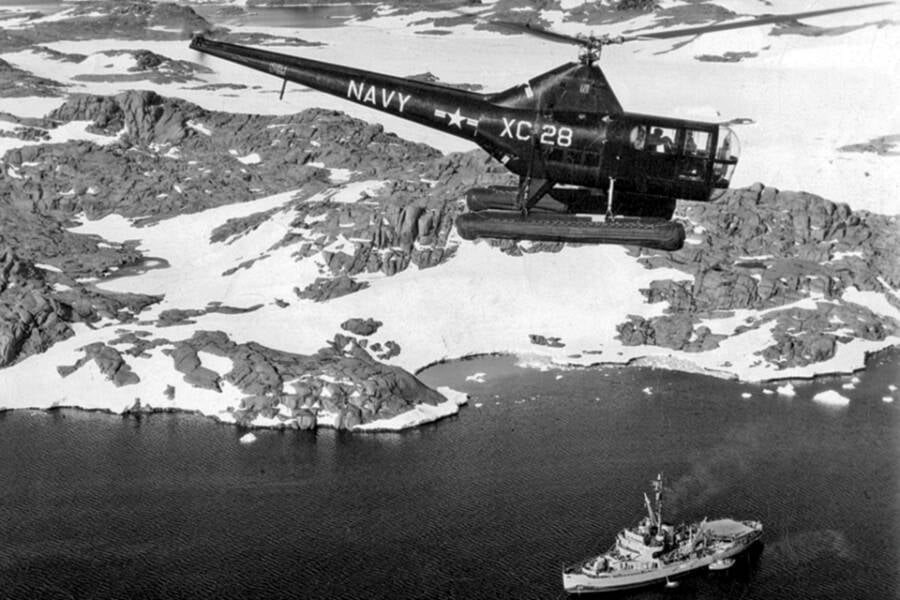
National Museum of Naval AviationA Navy Sikorsky HO3S-1 helicopter surveys Antarctica’s inhospitable terrain for Operation Highjump.
Operation Highjump, launched in 1946, was a U.S. naval expedition to Antarctica led by Rear Admirals Richard E. Byrd and Richard H. Cruzen. Its objectives were to train military personnel in extreme conditions, claim territory, establish a U.S. base, evaluate airfield usability on ice, and gather geological data. The operation involved 70 ships, 13 aircraft, and over 4,700 personnel, making it the largest military Antarctic expedition in history.
The task force faced challenges like extreme weather and dangerous flying conditions. Only a few days into the mission, a tragic aircraft crash resulted in the deaths of three crew members. Despite these difficulties, the team succeeded in carving safe routes and establishing Little America IV, a temporary base near the Bay of Whales. Helicopters played a huge role, and influenced future American military tactics in polar conditions.
Operation Highjump also collected valuable geological and photographic data, mapping over 1.5 million square miles of Antarctica. That said, although the operation was deemed a success by Navy officials, many in the task force felt it lacked organization and clear objectives. Indeed, it came to an end after just three months in February 1947.
And in recent years, some have speculated that Operation Highjump was actually a government cover-up for something else.
The U.S. Government Approves A Naval Expedition To Antarctica
On August 26, 1946, chief of U.S. naval operations Admiral Chester Nimitz announced a massive military combined expedition called Operation Highjump, which would take place in Antarctica starting that December. The naval contingent, known as Task Force 68, would commanded by Rear Admiral Richard H. Cruzen and Rear Admiral Richard E. Byrd.
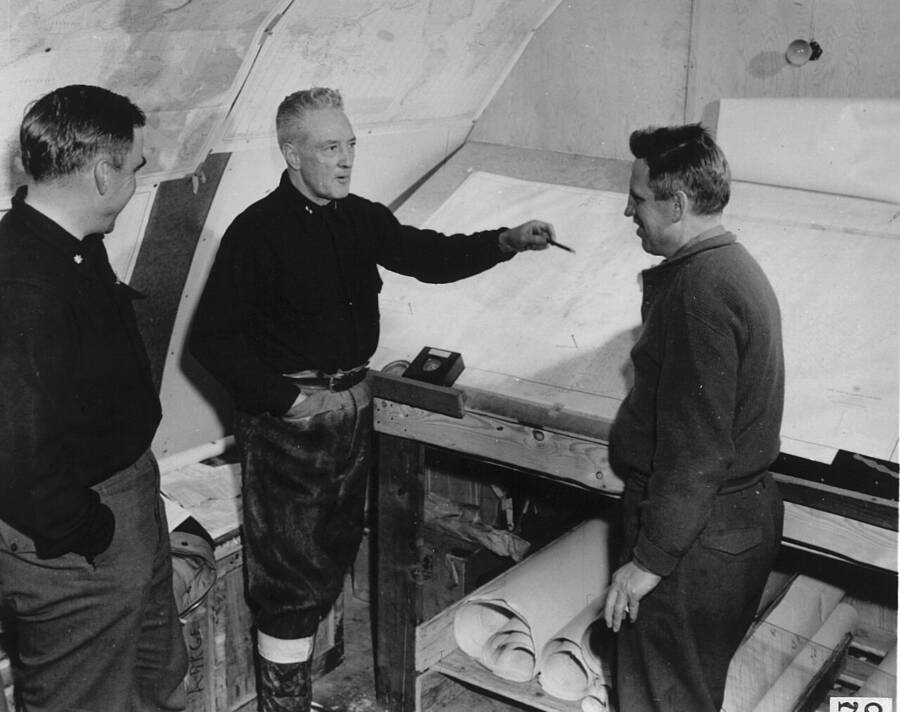
US Navy, National Science FoundationAdmiral Byrd during Operation Highjump. Circa 1946-1947.
The operation, according to a November press conference given by Admiral Byrd, “was primarily a military mission to train naval personnel, test ships, planes, and the new helicopters under frigid zone conditions [and to] develop techniques for establishing and maintaining air bases in Antarctic. A secondary objective was to increase knowledge of hydrographic, geographic, meteorological, geological and electromagnetic conditions of the area.”
Operation Highjump had other, less public, goals as well. As historian Dian Olson Belanger told Smithsonian Magazine in 2007, the U.S. Navy had also been given classified orders to establish a claim to land in Antarctica. The Navy also sought to prove itself to U.S. President Harry Truman, who wanted to reduce the country’s post-World War II budget. And the mission took place in the shadow of the Cold War, which had prompted fears about a Soviet attack on the United States over the North Pole. The American military wanted to be sure it had the technology to fight in cold climates.
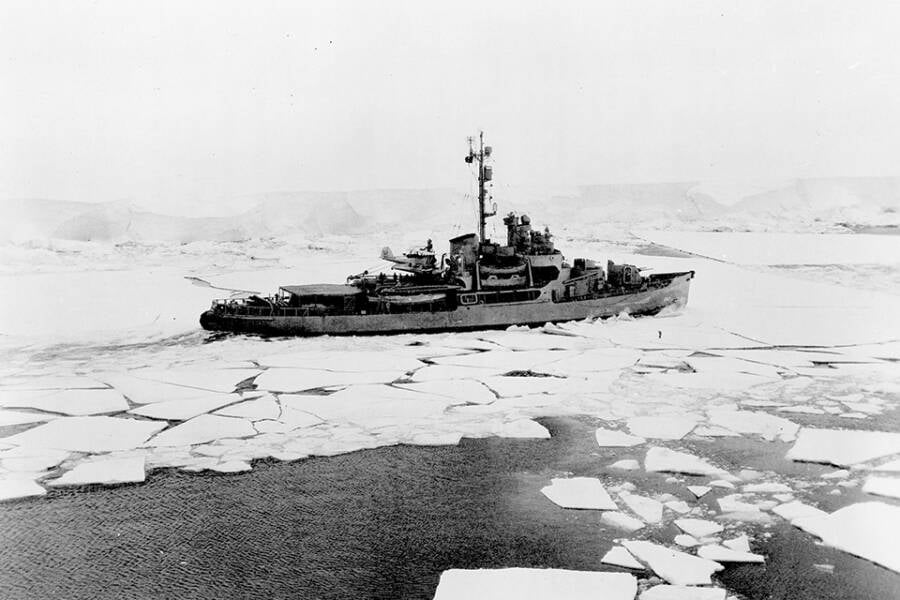
National ArchivesThe Coast Guard cutter Northwind clearing sea lanes for the task force.
The first ships arrived in position to launch aircraft to Antarctica in December 1946. Operation Highjump had begun.
The Dangers And Triumphs Of Operation Highjump
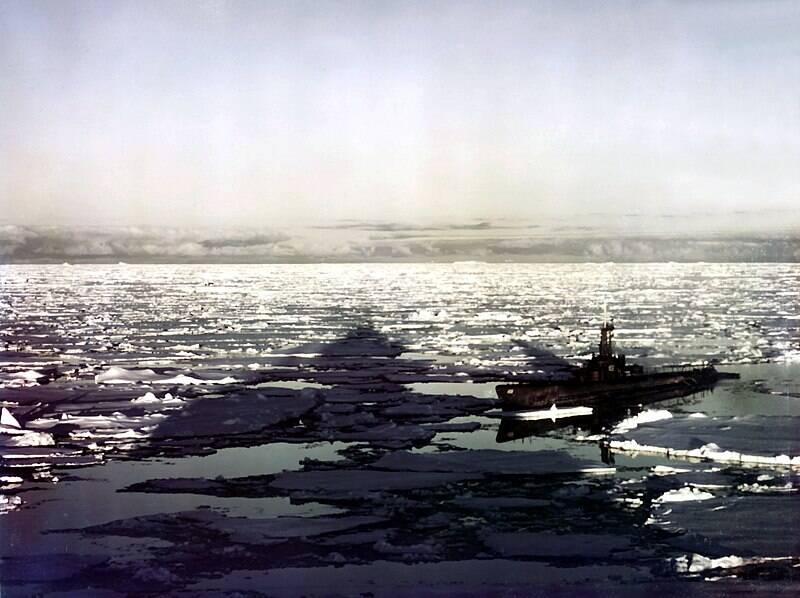
Public Domain The USS Sennet participating in Operation Highjump.
As the men of Operation Highjump quickly discovered, Antarctica could be treacherous. On Dec. 30, 1946, a Martin PBM-5 plane called George 1 crashed on Thurston Island in Antarctica. Six of the men on board survived the crash — and were rescued 13 days later — but Maxwell A. Lopez, Wendell K. Henderson, and Frederick W. Williams were all killed.
Despite the tragedy, Operation Highjump continued. Using helicopters, the task force scouted out safe routes for their vessels along heavy sheets of ice. Though helicopters actually proved to be more efficient in cold temperatures, the severe conditions often made air travel extremely dangerous. The helicopters had to be carefully prepared before take off, and even then they were in danger of ice accumulation on the rotor blades.
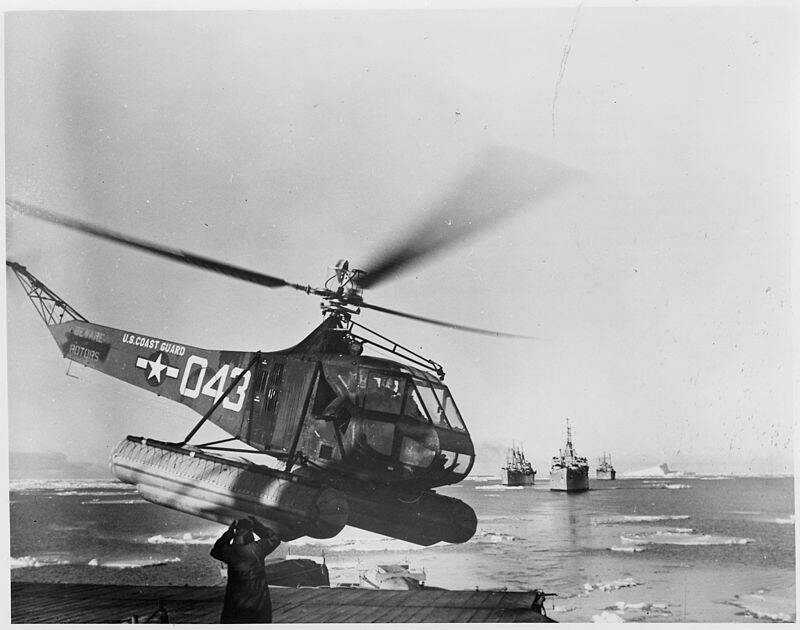
Public DomainU.S. Coast Guard helicopter lands on icebreaker USCGC Northwind during Operation Highjump.
Icy rotor blades caused more than one helicopter to crash. At one point, a HO3S-1 returning from a reconnaissance mission to the USS Pine Island crashed into the sea after its rotor blades became too icy. Though the helicopter was lost, the two men aboard were quickly saved from the freezing water.
By January, the men of Operation Highjump began to look for a suitable site to build a base, which they dubbed Little America IV. They found such a site near the Bay of Whales, and began building almost immediately.
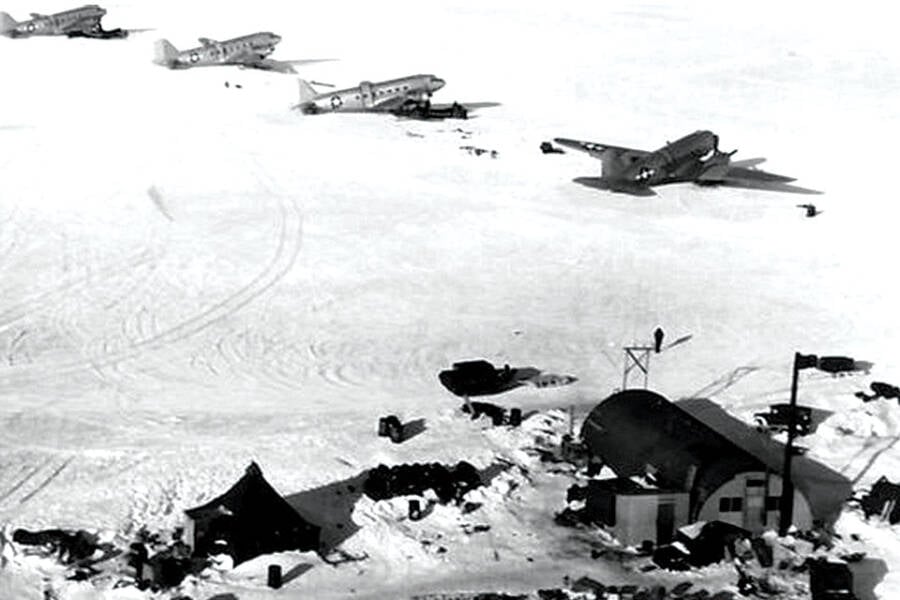
National Museum of Naval AviationR4Ds line up on the ice at Little America IV.
The crew unloaded their snow vehicles and got to work setting up tents, huts, and runways. For the next few weeks, Little America IV became home base for Operation Highjump, which focused on air exploration in the surrounding area. As United States Coast Guard Aviation History notes, their primary goal at this point was to conduct aerial mapping of as much of Antarctica as possible, especially its coastlines.
The Abrupt End Of Operation Highjump — And The Conspiracy Theories About It Today
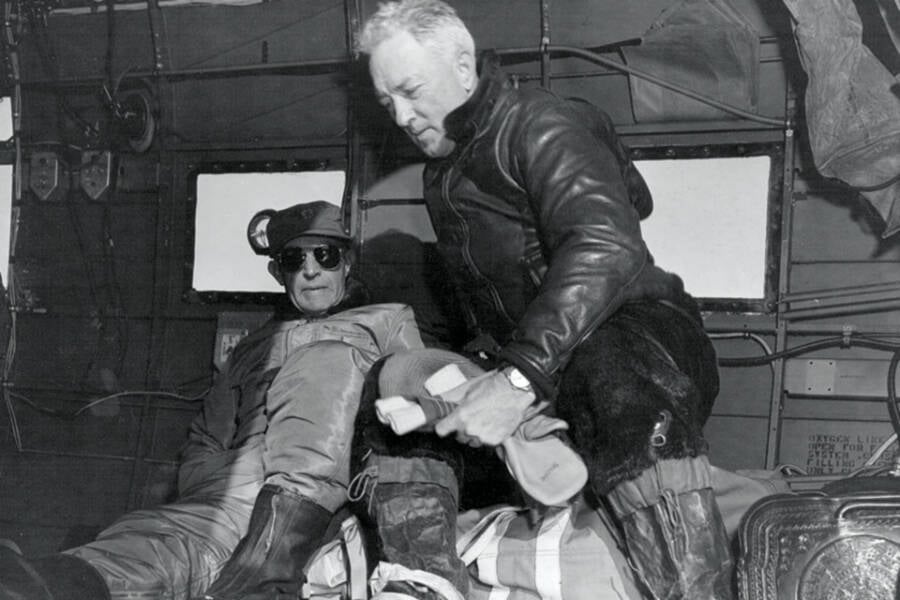
U.S. NavyExpedition commanders Rear Admirals Richard H. Cruzen (left) and Richard E. Byrd (right) board a Douglas R4D-5 during the operation.
Alongside setting up an American base in Antarctica, Task Force 68 fulfilled their goal of collecting a large amount of geological data about Antarctica.
The men of Operation Highjump collected water and soil samples and even detected a large coal deposit, data which future researchers would when determining where to create new bases. The team’s aircrafts also completed 28 photographic flights, capturing more than 70,000 photos taken over 1.5 million square miles of territory.
“Our hope,” Byrd noted, “is that now we have the entire material to make a detailed map of all of Antarctica.”
That said, Operation Highjump came to a rather abrupt end in February 1947. Though many U.S. Navy officials deemed it a success, the operation was marked by loss of life and lackluster organization. Many participants felt like the operation was haphazardly strung together and later described not understanding their real mission in the Antarctic.
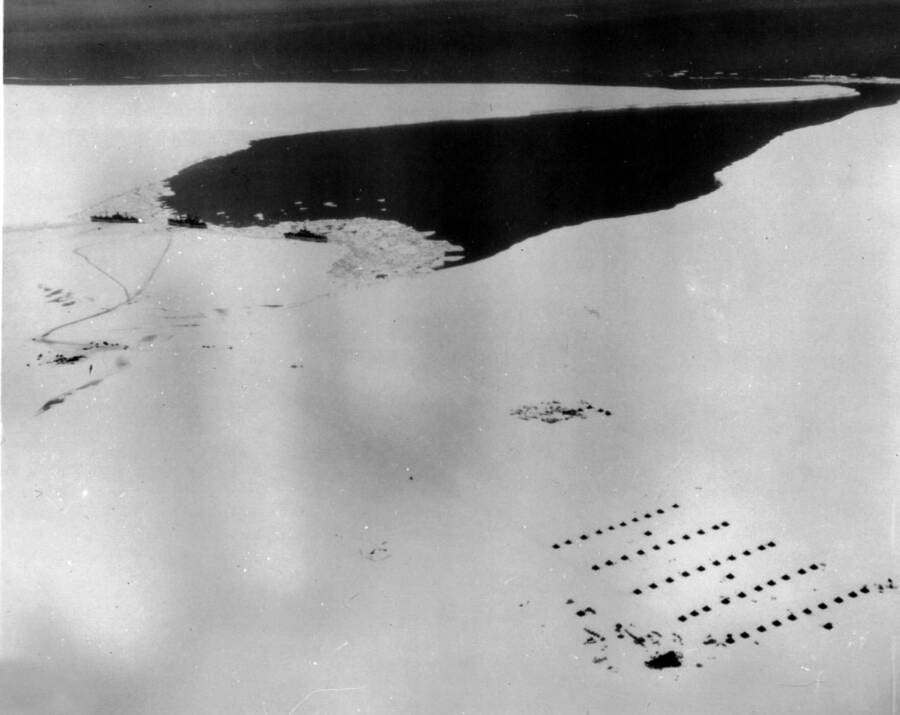
US NavyLittle America IV as seen from the air.
“We didn’t really know what we were doing. We didn’t know about precision flying or what we were looking at,” Conrad “Gus” Shinn, who flew R4Ds from the carrier USS Philippine Sea, told Belanger.
That said, the U.S. Navy presented Operation Highjump as a transparent expedition to the wider world. Throughout the entirety of the operation, military photographers captured footage of the events which were shown in movie theaters as the documentary The Secret Land. The film went on to win the 1948 Academy Award for Best Documentary.
But that didn’t stop public speculation about the true nature of Operation Highjump. Many conspiracy theorists believe the mission was meant to seek out secret Nazi bases — or make contact with aliens. In recent years, some have claimed that Operation Highjump was meant to photograph the “ice wall” which Flat Earthers believe surrounds the planet, or that the military photographs revealed evidence of a secret civilization.
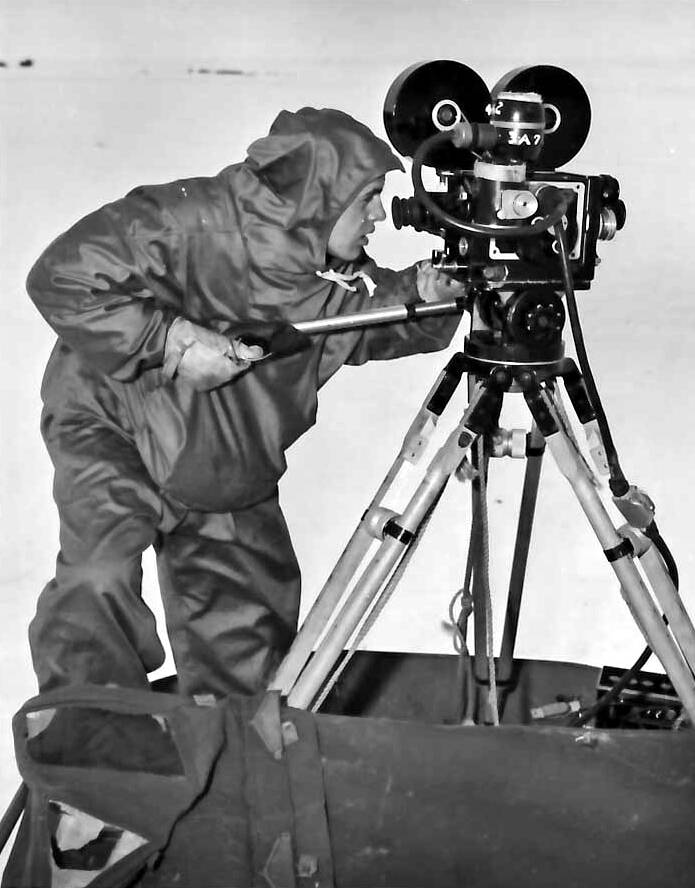
Public DomainA U.S. Navy cameraman filming Operation Highjump. Though the operation was seemingly transparent, theories have emerged about its “secret” purpose ever since.
Of course, none of these rumors have been proven.
Rather, Operation Highjump would start a series of future polar operations, including the U.S. Navy’s Operation Windmill in 1947-1948. But the international community didn’t want to Antarctica to become a military zone, and the Antarctic Treaty — preventing the militarization of the southernmost continent — was signed on December 1, 1959.
Today, Antarctica is primarily a place of research and science. But Operation Highjump stands as a curious moment in its history, when thousands of soldiers descended for training and exploration — if not more.
After reading about Operation Highjump, dive into the true story of nine secret U.S. operations that are almost too bizarre to believe. Then, read about Operation Northwoods, the CIA operation meant to incite a war between the United States and Cuba.





